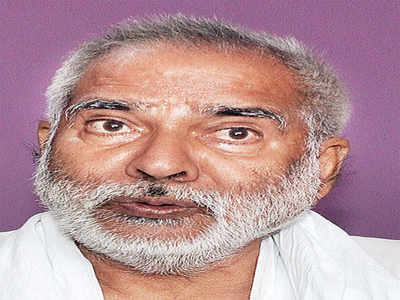
A Lalu loyalist who was forced to jump ship towards the end
by Radhika RamaseshanSpurned by the RJD chief in the penultimate phase of a long political career, Singh, a lifelong socialist, was on the cusp of change
Raghuvansh Prasad Singh probably died a bitter man. Spurned by Lalu Prasad, his associate of yore, in the penultimate phase of a long political career, Singh, a lifelong socialist who called himself a disciple of Samajwadi legends Ram Manohar Lohia and Karpoori Thakur, was on the cusp of change. He was about to transit from the Rashtriya Janata Dal (RJD) to Nitish Kumar’s Janata Dal (United) in the lead-in to Bihar’s assembly polls. Singh was denied the chance. He died Sunday morning at age 74 in Delhi’s AIIMS, where he was put on a ventilator a day before after developing post- Covid-19 issues.
The last part of Singh’s life panned out through serial missives that revealed that he was determined to sever his 32-year association with Lalu, that Lalu’s last-minute entreaties to stay on with the RJD had left him unmoved, and he was ready to team up with Nitish, despite being a staunch opponent of the BJP and communalism.
Last week, he wrote a resignation letter to Lalu, stating that he would no longer stand with him. Singh was embittered with the RJD chief for ignoring him since 2014 after he lost the election from Vaishali, his old constituency. In 2009 itself, Lalu betrayed a sense of insecurity when he turned down the Congress’s offer to induct Singh for a second inning as the rural development minister in the UPA government. Singh’s first stint in the ministry is enshrined in law and political history. He fleshed out and refined the MGNREGA scheme that was conceptualised by Sonia Gandhi’s National Advisory Council, shaped the statute and piloted the bill until Parliament adopted it as law.
Singh became a synonym for MGNREGA and Sonia, on her part, let him take the kudos for the flagship scheme. It might have warmed his heart to know that the rural distress caused by the national lockdown and large-scale migration to the villages resulted in the highest number of job seekers under MGNREGA this year, in UP, West Bengal and Bihar, his home state. Evidently, Lalu feared he would be overshadowed by Singh.
After he lost elections in 2014 and 2019, he wanted a Rajya Sabha berth, which Lalu refused. Singh alleged that the RJD pandered to the “wealthy”, a veiled reference to a Haryana businessman who unfailingly gets a place in the Upper House from the RJD.
His resignation shook Lalu enough for him to dash off a letter in which he said: “You are not going anywhere, the family needs you.” Singh didn’t reply. The mention of the “family” must have irked him because in his second and a longer epistle, which was handwritten like the others, he noted that the “photos of five members of one family have replaced Gandhi, BR Ambedkar, Jaya Prakash, Lohia and Karpoori Thakur”. On previous occasions, Singh had signalled his impatience to work with Lalu’s heir apparent, Tejashwi Yadav, who now runs the RJD. The second letter made it amply clear: “There was a time when we gave speeches that a queen does not give birth to the king in a democracy. Now what happened?”
On the same day, Singh wrote to Nitish, proposing an amendment to MGNREGA to make it more accessible to small and marginal peasants, retrieving Buddha’s begging bowl from Kabul and linking the ponds in Vaishali to the Centre’s ‘Jal Jeevan Haryali’ project. He didn’t live to know of the Bihar CM’s response, which was certain to be positive because for the JD (U), Singh was a prize acquisition on election eve.
Singh was never a leader of the Rajputs, his community. His electoral victories were on the back of Lalu’s Muslim-Yadav vote banks. But he was a founder of the RJD who, unlike its other architects, never left Lalu in bad times. Not until he was pushed to the wall.